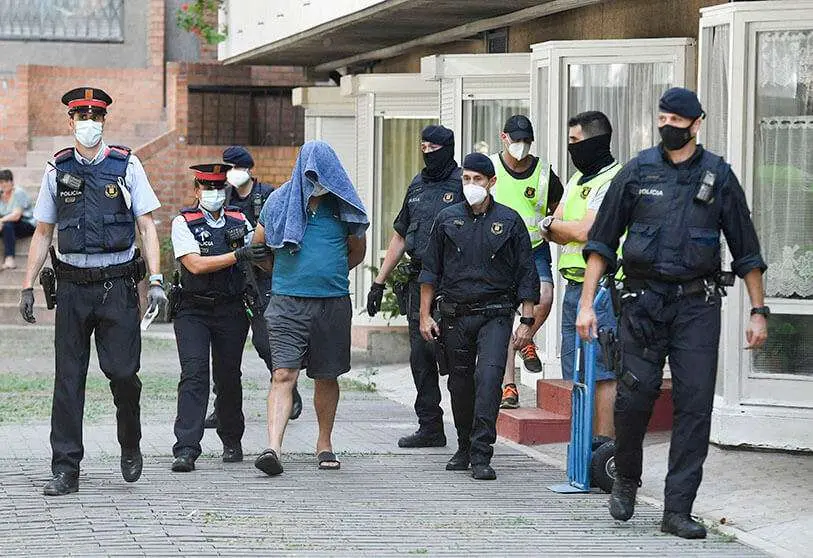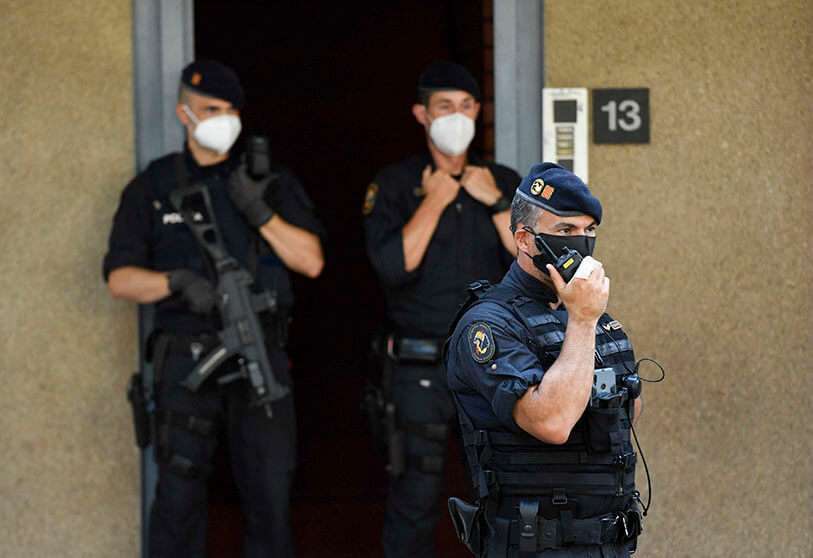Does the jihadist threat migrate illegally? The reality of Jihadism's provenance in Spain

Once again Jihadism is used to its own advantage to support xenophobic and racist ideas, this time against migration flows from Africa and Arab countries. However, contrary to what certain political parties and " bar" conversations argue, the reality turns out to be different.
Based on a study carried out by the Real Instituto Elcano in 2019, directed by Fernando Reinares, Carola García-Calvo and Álvaro Vicente1, it has been possible to analyse the various characteristics of the Jihadists condemned or killed in Spain from 11 March to 2018. Taking the data provided as a source, it is possible to ascertain the different Jihadist radicalisation groups on Spanish soil and note a change in trend since 2011, coinciding with the emergence of Daesh and the subsequent establishment of the Caliphate.
With regard to nationality, until 2011 the percentage of foreign Jihadists (convicted or killed in Spain) was 79.9 percent compared to 20.3 percent of Spanish origin; the trend changing from 2012, with 55.1 percent compared to 44.9 percent, respectively. It can be seen that whereas in the "early days" of the phenomenon the danger lay with individuals from areas outside Spain, since the establishment of the Caliphate the individuals joining the armed Jihad have increasingly been of Spanish origin (65 percent of foreign origin - 35 percent of national origin). It should be pointed out that only 8.1 percent of foreigners were in an irregular situation, compared to 56.6 percent who had papers and regular residence status2.
The threat of terrorism is multiplied when it is linked to organised crime. In addition to finding a form of financing in this type of activity, it also provides access to falsified documentation3 which enables access to our country through legal channels, the main access route being the airports4, without raising suspicions and in a more secure manner. This nexus of cooperation ensures the continuity of this "super partnership".5
Among the predominant nationalities, from 2012 onwards, Moroccans (46.2%), Spaniards (41.5%) and Algerians (1.5%) stand out. It is necessary to mention at this point the importance of second generation young people, a marked focus of radicalisation. Individuals born on Spanish soil but brought up between two cultures, with frequent identity crises as they do not consider themselves fully integrated into either, feel marginalised and displaced, and make up 43.5 percent of the total6
However, despite the data revealed by Elcano's study, it is not possible to turn a blind eye to migratory flows, which are a potential route of entry for Jihadism. As the last attack in Nice last year showed, the Tunisian Jihadist used the Lampedusa migratory route to reach France7. Similarly, in the Paris attacks in 2015, many of the Jihadists involved managed to infiltrate through immigration and false documentation provided by criminal organisations8.

On Spanish soil, during the last year, the police have arrested several individuals who arrived on national soil infiltrated in small boats. One of these is the case of Egyptian Abdel-Majed Abdel Bary, who was arrested on his arrival in Spain on a boat from Algeria. He was a returned terrorist, one of the most wanted in Europe, who was travelling with two other individuals who formed his cell. In October, another presumed Jihadist was arrested on Spanish soil and arrived in the Canary Islands on a boat in 2018, was part of an international network responsible for the recruitment of women for terrorist purposes in favour of Daesh, as well as relations with criminal organisations9.
On 11 January 2021, the police arrested several Jihadists with the intention of carrying out attacks, who had settled in Barcelona and were cooperating with Daesh and had arrived on the coast of Almería in a patera10.
Mention should also be made of the converts to Islam, 90.2 percent of whom are Muslims and have limited knowledge of the Koran and the Sharia. Of the total number of individuals involved in the study11, only 21.6% had relevant knowledge. This figure shows the lack of religious knowledge of those who join the armed Jihad and terrorist organisations that claim to defend religion.
However, as the data provided have shown, despite the fact that only 8.1 percent were illegal immigrants, it is essential to stress the problem with the MENAS and, above all, the lack of social reintegration by the administrations and centres.
At the top of the list is Catalonia where there are more than 4,200, followed by Andalusia. The problem of these children and adolescents lies in the precarious measures adopted by the authorities, who opt for mere patches that do not solve the problem12, and which are much less prospective measures in view of the future danger to these young people. The creation of centres for minors without the application of educational and reinsertion measures only turns these centres into breeding grounds for criminal and jihadist activity. In fact, 18 per cent13 of those who arrived between 2016 and 2018 have been detained or investigated at least once, which is not surprising considering that in order to enter the labour market, once they have reached the age of majority and left the guardianship of the Administration, it is necessary to obtain a 40-hour job, something which is already difficult even for people with high levels of education14.
All these factors constitute a more than adequate breeding ground for these people, who have constant identity crises, among others, to resort to Jihadism as a means of finding meaning in their lives, something that is left to the measures that governments propose to prevent it.
Amanda Pérez Gómez, criminologist specialising in the analysis and prevention of terrorism
References:
1 Reinares, F., Vicente, Á., & García-Calvo, C. (2019). Yihadismo y yihadistas en España. Once años después del 11-M. Madrid: Real Instituto Elcano.
2 Zuloaga, J. (24 de Noviembre de 2020). El peligro real para España de los yihadistas infiltrados entre inmigrantes. La Razón.
3 Rocha, I. M. (2017). Nuevas dinámicas en las relaciones entre crimen organizado y grupos terroristas. Revista Española de Derecho Internacional, 25. PÁG. 152
4 Pastor, A. (2019). Datos frente a las mentiras. En C. d. Comité Especializado de Inmigración, El fenómeno migratorio en España. Reflexiones desde el ámbito de Seguridad Nacional. (págs. 49-52). Pág. 50
5 Ministerio de Defensa. (2006). El control de los flujos migratorios hacia España: Situación actual y propuestas de actuación. Madrid: Ministerio de Defensa.
6 EFE. (6 de Marzo de 2019). 60 % de yihadistas detenidos en España son segunda generación de inmigrantes. La Vanguardia.
7 Gómez, A. P. (2020). Túnez, la lacra del terrorismo. Atalayar
8 Zuloaga, J. (24 de Noviembre de 2020). El peligro real para España de los yihadistas infiltrados entre inmigrantes. La Razón.
9 Zuloaga, J. (9 de Diciembre de 2020). Alertan de la posible presencia de yihadistas entre los inmigrantes que llegan a Canarias. La Razón.
10 Martialay, Á. (11 de Enero de 2021). Los yihadistas detenidos en Barcelona llegaron a España en patera por Almería. El Mundo.
11 Reinares, F., Vicente, Á., & García-Calvo, C. (2019). Yihadismo y yihadistas en España. Once años después del 11-M. Madrid: Real Instituto Elcano.
12 La Vanguardia. (5 de Julio de 2019). ¿Qué pasa con los ‘menas’? La Vanguardia.
13 Armora, E. (14 de Julio de 2019). «Los menas son la punta del iceberg de una catástrofe humanitaria». ABC.
14 EFE. (6 de Agosto de 2019). ¿Cuántos menas hay en España? El Confidencial.
